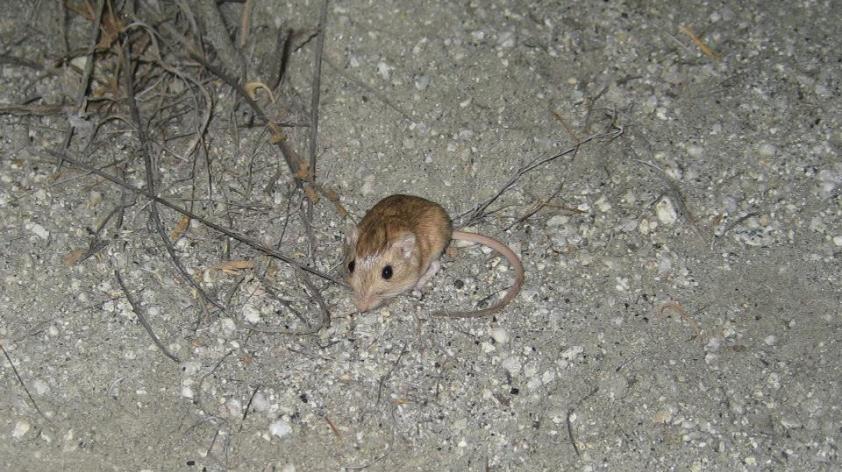
Can you dig it?
Habitat is one of the most important features to consider in conservation of endangered species. Loss of habitat is one of the primary reasons that species become threatened- when areas get developed for urban or agricultural use, the features that wild animals need to survive are lost.
Areas targeted for conservation or restoration are selected because they meet the habitat needs of a particular species (or sometimes a group of species). Selecting the right habitat is critical to reintroduction success when we are working with animals that have been born in captivity and that will be reintroduced back into the wild, hopefully creating a new population that will persist and expand.
With the endangered Pacific pocket mice, habitat includes not only the plants and other animals in the community, but also the type of soil! Nocturnal pocket mice dig burrows where they rest during the day, store seeds, raise their babies, and sleep during most of the winter. The burrow protects them from predators and extreme weather- they stay cool during hot summer days and warm during cold winter nights. The shape and depth of the burrow influences the temperature and humidity a pocket mouse experiences inside.
Because burrowing behavior is so important for Pacific pocket mice, we want to be sure the reintroduction sites for animals from our conservation breeding program have the right kind of soil.
Soil is made up of particles of different sizes, and the relative amount of each size makes up the soil texture. We can collect soil samples in the field and, through a combination of high tech and low tech methods, measure the relative amounts of each soil component.
After we sift out the larger gravel particles, we use a milkshake mixer to thoroughly mix the soil with water (yum!). Using a hydrometer, we can measure the rate the different particle sizes settle. Larger particles of sand settle to the bottom first, while fine silt stays suspended the longest. We also measure compaction, or how hard the soil is, in the field. With these measurements, we can compare the soil where PPM live to the texture and hardness of potential release sites to make sure the areas we release them are suitable for their burrowing needs.
We often take the ground for granted, but from the perspective of a Pacific pocket mouse, soil might be one of the most important parts of their habitat!













